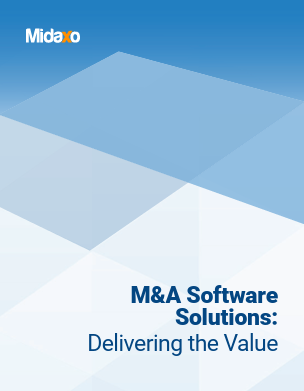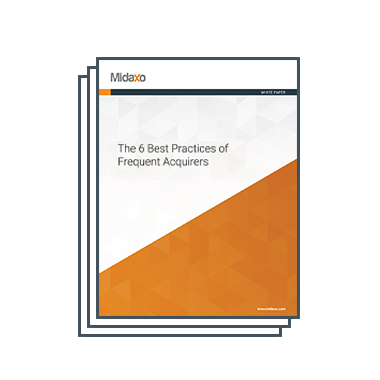Introduction
The landscape of M&A is undergoing significant changes, driven by evolving market dynamics and technological advancements. The traditional approach of large, one-off deals is giving way to smaller, more frequent programmatic ones that involve more flexibility and agility. Similarly, the reliance on advisory-led deals is decreasing, with more companies opting for own-sourced deals that offer greater control and cost-efficiency. End-to-end platforms with AI and data-driven solutions are also transforming the M&A process, allowing for more efficient and effective deal-making. All these changes reflect a shift towards the dominance of a more repetitive and programmatic approach to M&A that emphasizes agility, speed, and innovation.
In a recent webinar entitled “How to Build a Winning M&A Pipeline,” Jude McColgan (CEO, Midaxo) and Vilius Audinis, PhD (Head of Product Management, Midaxo) shared their insights on the key factors that contribute to a sourcing strategy that aligns with the new approach to M&A outlined above. You can watch the full webinar on demand or continue reading for 4 takeaways on efficiently identifying the best targets, systematically evaluating them, and increasing the percentage of deals that achieve their project value.
1. How to Identify the Best Targets
Identifying M&A opportunities is a critical step in building a winning pipeline. So what matters most? In most cases, strategic fit + business initiatives. Applying a structured approach to sourcing that combines automated quantitative analysis and qualitative judgment makes this opportunity identification stage far easier. Additionally, an automated platform designed for the deal acquisition process will help a team review more deals faster and to pinpoint the targets that meet thesis criteria.
With instant access to deal information from multiple sources in an M&A platform, honing in on the opportunities that match both strategic fit and business initiative goals is simple. A centralized, structured and searchable deal database acts as a single source of truth, preserving institutional knowledge and speeding this first step along.
2. Best Practices for Prioritizing Deals
Once M&A opportunities have been identified, developing a robust deal pipeline — including a mix of potential targets at different stages of the M&A process — requires an effective deal-scoring strategy.
Once you set up weight evaluation criteria to help your team identify the best targets of the bunch, you’ll want to also set up dynamic weightings to help identify deals to revisit. This, too, is much easier in a devoted productivity platform for corporate development, as it allows you to easily leverage information from internal systems and sources. Having information automatically and routinely updated lets you better quantitatively score deals and track value with far less effort.
3. How to Transform Contacts into Relationship Intelligence Using a Deal CRM
Maintaining relationships with potential targets is a critical aspect of building a winning M&A pipeline. A comprehensive deal CRM (Customer Relationship Management) system enables companies to track interactions with potential targets and build relationships over time. When a team is able to effortlessly capture emails and contracts and log related calls, meetings, and notes in one place, it introduces a whole new level of productivity. By using a deal CRM, companies can stay informed of key developments, track progress against investment criteria, and build trust with potential targets.
4. Increase Productivity and Transparency
In the new age of dealmaking, companies need to be able to quickly and accurately analyze data, communicate information to stakeholders, and make informed decisions on their pipelines. M&A software with custom reports, embedded analytics, and dynamic slides can be a powerful tool in achieving these goals. Custom reports allow companies to tailor their analysis to their specific needs, while embedded analytics provide real-time insights into data. Dynamic slides allow for quickly generated clear and concise communication of complex information to stakeholders. By increasing productivity and transparency companies can ensure that they are making informed decisions and maximizing the value of their deal pipelines.
Conclusion
Inorganic growth is increasingly an essential part of company strategy. McKinsey found that companies with a primarily organic approach grow 74% less than those that rely on M&A. At the same time, the landscape of M&A is undergoing significant changes, driven by evolving market dynamics and technological advancements. Building a winning M&A pipeline for today’s environment requires a systematic approach that combines quantitative analysis and qualitative judgment — preferably with an end-to-end platform to allow for more efficient and effective deal-making. By following the programmatic approach best practices for identifying and prioritizing deals, maintaining relationships with potential targets, and tracking key metrics, companies can develop a robust M&A strategy that delivers long-term value. Watch our full webinar on the subject here.





